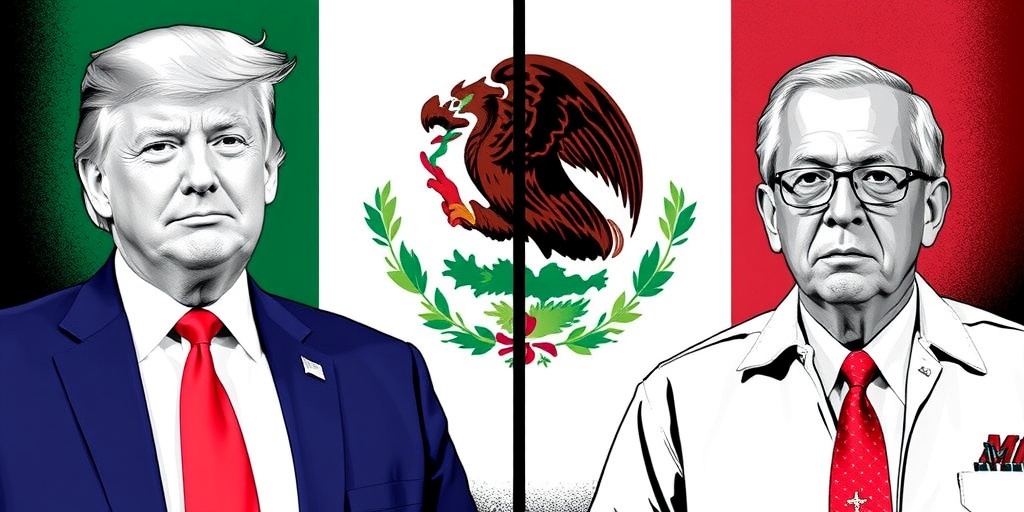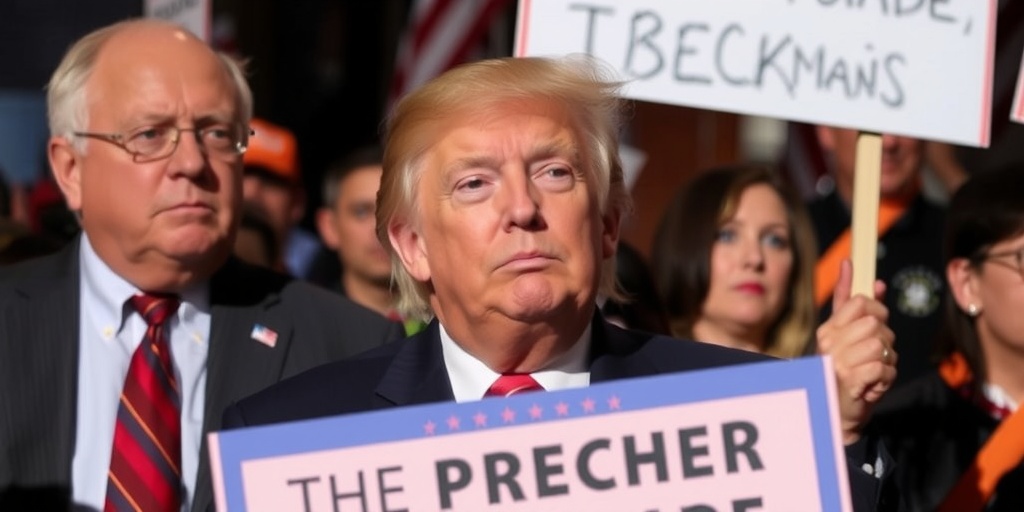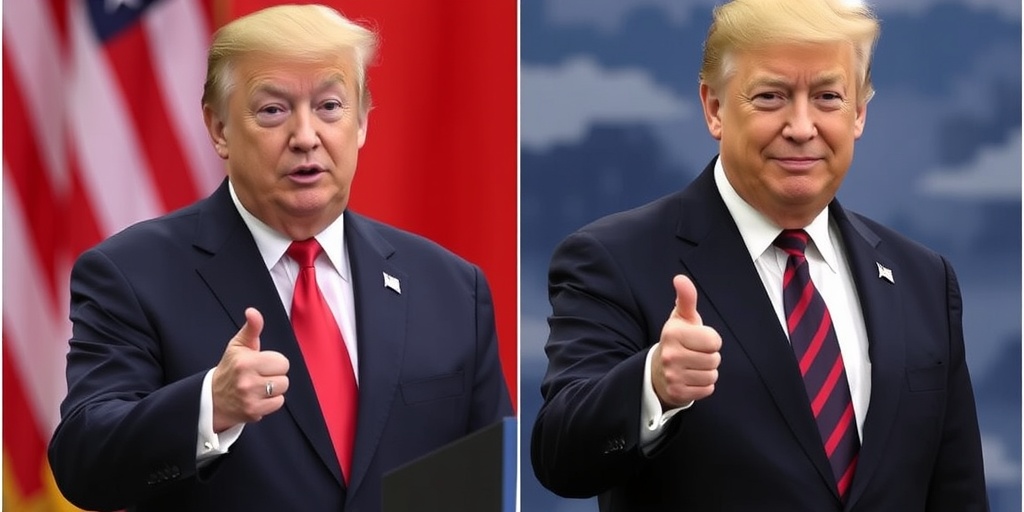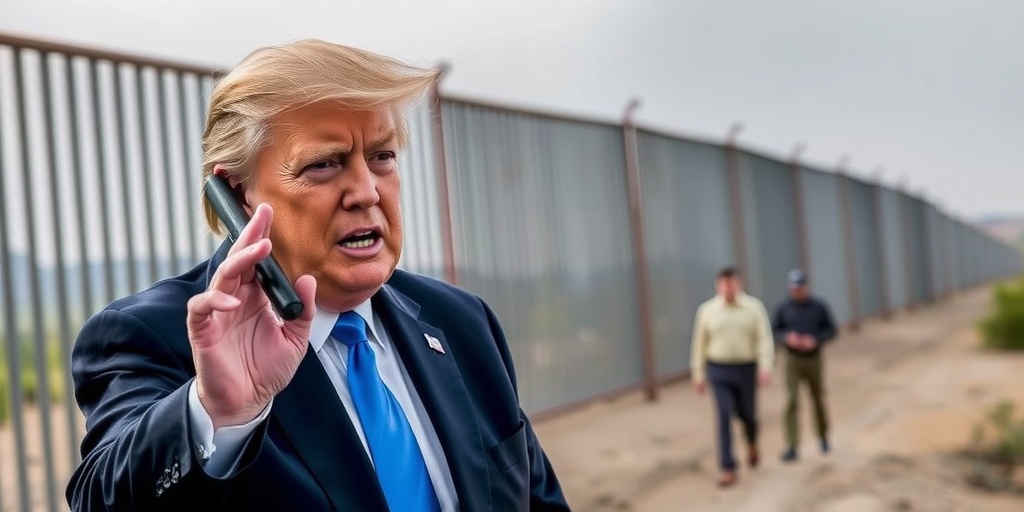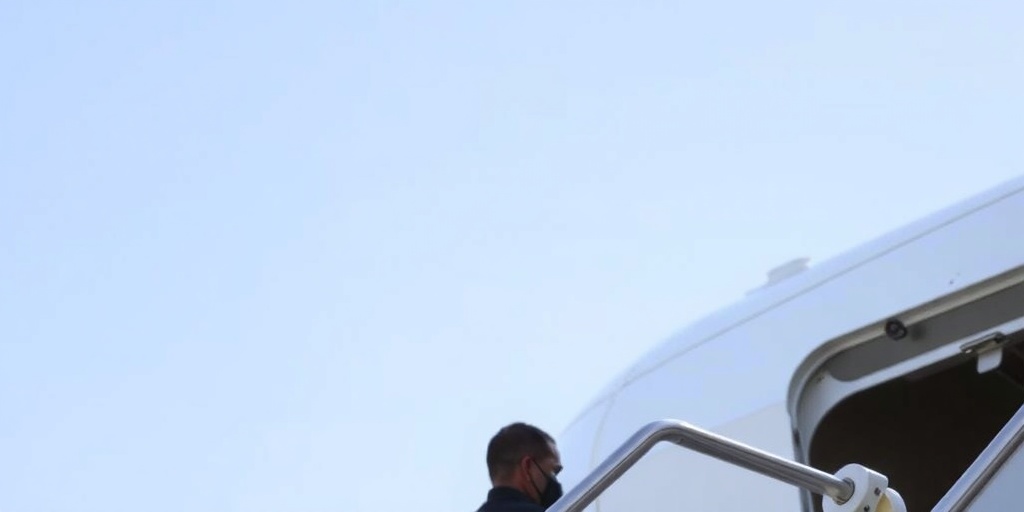Now Reading: Trump Launches Immigration Crackdown, Deploys Military and Tests Legal Limits
-
01
Trump Launches Immigration Crackdown, Deploys Military and Tests Legal Limits
Trump Launches Immigration Crackdown, Deploys Military and Tests Legal Limits

President Trump initiated his presidency with a series of sweeping executive actions aimed at reversing the immigration policies of the previous Biden administration, signifying a robust shift in the United States’ stance on immigration and refugee status. These early actions, which included a national emergency declaration to bolster military presence at the U.S.-Mexico border, were characterized by an aggressive stance against both legal and illegal immigration.
In a dramatic display of determination shortly after taking the oath of office, President Trump issued a range of executive orders that sought to tighten the nation’s borders against migrants, while simultaneously intensifying enforcement actions against undocumented individuals already residing within the United States. Among these orders was an effort to eliminate the program, known as C.B.P. One, that allowed migrants to secure appointments for entry into the U.S. through legal ports. The cancellation of this program left approximately 30,000 migrants in limbo, complicating their efforts to seek legal entry into the country.
Trump’s administration argued that the current influx of migrants posed a national security risk, in addition to a public health concern. The president asserted that migrants often failed to provide comprehensive health information to border officials, thereby creating potential health threats. As part of this enforcement strategy, Trump declared a national emergency, which was designed to bypass congressional approval in order to secure funding for border wall construction and to enhance immigration enforcement efforts, including more direct military involvement.
Legal experts and civil rights advocates quickly raised alarms about the implications of Trump’s directives, particularly regarding the deployment of military resources for immigration enforcement. Critics pointed to the Posse Comitatus Act, which restricts the use of federal troops for domestic law enforcement, arguing that such an approach is dangerous and counterproductive.
Despite the fact that illegal border crossings had notably decreased during the latter part of the Biden administration, Trump’s new executive actions were a reaffirmation of his campaign promises dedicated to reducing immigration and pursuing mass deportations. One of the most controversial decrees issued aimed to challenge the long-standing legal interpretation of birthright citizenship, explicitly stating that U.S.-born children of undocumented immigrants would no longer be recognized as citizens. This directive prompted immediate backlash, including a lawsuit from the American Civil Liberties Union.
While Trump cannot amend the Constitution alone—such a change requires both congressional supermajorities and ratification by a vast majority of states—his order reflects an intent to sidestep established legal norms and could potentially bar migrant children from access to essential public services. Advocacy groups emphasized that this action signifies a broader attempt to undermine civil rights and dismantle decades-old legal protections for immigrants.
Vanessa Cárdenas, director of America’s Voice, a pro-immigration advocacy organization, expressed grave concern regarding the implications of Trump’s policies on both immigrants and the nation’s legal framework. “The push to gut 150 years of settled law and hard-won progress by attacking birthright citizenship seeks to reshape America’s future, pushing us backward,” she stated.
Among Trump’s significant actions was the immediate rescinding of a number of Biden’s immigration policies, including those aimed at reuniting families separated under Trump’s previous administration due to aggressive immigration enforcement tactics. Additionally, Trump threatened local agencies with funding cuts if they did not cooperate with Immigration and Customs Enforcement (ICE), further intensifying pressures on local governments.
As reports emerged from border crossings, many migrants were confronted with uncertainty as they discovered that their appointments for entry had been abruptly canceled. In Tijuana, Mexico, individuals who fled their countries due to violence and instability expressed disbelief and desperation at the sudden change in their circumstances.
Moreover, Trump’s executive orders hinted at the possibility of re-establishing travel bans reminiscent of his first term. By mandating a comprehensive review of countries that might pose security risks, Trump’s administration aimed to identify potential new travel restrictions within a 60-day framework. This directive also included measures to suspend refugee resettlement processes and enhance vetting procedures for individuals seeking entry from abroad.
Emphasizing a strong anti-drug stance, Trump also classified drug cartels as terrorist organizations, thereby empowering his administration to intensify actions against these entities. While the Biden administration had previously implemented measures to limit asylum for migrants crossing illegally, the renewed focus under Trump is seen as a significant escalation of immigration enforcement efforts.
With many additional orders expected in the wake of his inauguration, the immediate outcome of Trump’s Day 1 actions sends a clear message about his administration’s intent to reshape the landscape of immigration policy fundamentally and to reinstate the hardline measures that characterized his previous term in office.
Stay Informed With the Latest & Most Important News
Previous Post
Next Post
-
 01New technology breakthrough has everyone talking right now
01New technology breakthrough has everyone talking right now -
 02Unbelievable life hack everyone needs to try today
02Unbelievable life hack everyone needs to try today -
 03Fascinating discovery found buried deep beneath the ocean
03Fascinating discovery found buried deep beneath the ocean -
 04Man invents genius device that solves everyday problems
04Man invents genius device that solves everyday problems -
 05Shocking discovery that changes what we know forever
05Shocking discovery that changes what we know forever -
 06Internet goes wild over celebrity’s unexpected fashion choice
06Internet goes wild over celebrity’s unexpected fashion choice -
 07Rare animal sighting stuns scientists and wildlife lovers
07Rare animal sighting stuns scientists and wildlife lovers













